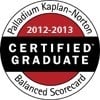Cash flow forecasting is a crucial process for businesses of all sizes. It helps companies predict the movement of money in and out of their accounts. This isn't a mystical practice; it's a science driven by data and strategy. Many business owners feel anxious about cash flow forecasting. You're not alone if you've wondered where the money went. Mastering this skill is vital for any business, impacting capital projects, debt repayments, and short-term obligations.
 Cash Flow
Cash Flow
Have you ever been surprised by a large expense or struggled to make payroll? Effective cash flow forecasting helps you avoid these scenarios. It's not just about predicting problems, but also about spotting growth and investment opportunities. Let's explore how cash flow forecasting can transform your business operations.
Understanding the Basics of Cash Flow Forecasting
Cash flow forecasting estimates future cash inflows and outflows. This forecast typically covers a specific period, such as a few weeks, months, or even a year. It's a key component of managing cash and working capital.
Research shows that poor cash flow management causes many small businesses to fail. This highlights how crucial effective forecasting is for business survival and success. Accurate cash flow forecasting assists in managing cash, aids in the weekly basis review of business cash and enhances growth strategies for expansion.
Cash flow forecasting isn't just about predicting incoming and outgoing money. It's also about understanding the timing. A profitable business could face trouble if expenses are due before income arrives. Understanding cash flow helps to make crucial decisions about growth planning, handle income statements better, and improve risk management.
The Components of a Cash Flow Forecast

A cash flow forecast includes several key elements. These elements help to understand actual cash flow, aid in short-term liquidity, and predict the week cash flow forecast.
- Opening Balance: The cash on hand at the start of the forecasting period. This is the starting point for liquidity planning, accounts payable management and for accurate cash flow forecasting.
- Cash Inflows: Sources of cash coming into your business, such as sales revenue and loan proceeds.
- Cash Outflows: All business expenses including payroll, rent, and supplier payments.
- Net Cash Flow: The difference between cash inflows and outflows for a specific period.
- Closing Balance: The expected cash balance at the end of the reporting period. An accurate picture of the closing balance will inform the growth strategies of a business.

Here’s an example:
| Component | Amount |
|---|---|
| Opening Balance | $10,000 |
| Cash Inflows | $50,000 |
| Cash Outflows | $45,000 |
| Net Cash Flow | $5,000 |
| Closing Balance | $15,000 |
The Benefits of Cash Flow Forecasting
Cash flow forecasting is worth the time and effort. It has benefits like assessing the short-term obligations, understanding the forecasting period and managing growth planning of the business.
Anticipating Cash Shortages
Cash flow forecasting helps anticipate potential cash shortages. By projecting your future cash position, you can identify periods where you might have trouble meeting obligations. This foresight allows for proactive measures like securing credit or adjusting payment terms. Accurately forecasting for specific period, especially those that include holidays, ensures better short-term forecasts and minimizes risk of unexpected shortages.
Planning for Growth
Cash flow forecasting helps plan for growth and seize opportunities. With a clear picture of your future cash position, you can make informed decisions about investments and expansions. Cash flow projections for the medium-term forecasts offer a framework for businesses to anticipate the cash required to execute the growth strategies effectively.
Improving Decision Making
A solid cash flow forecast improves strategic decision-making. It provides answers to questions like, "Should I invest in new equipment now?" and "Can I offer discounts?". With cash forecasts and cash flow projection in place, businesses can address the liquidity issues, take better financial decisions and prepare their income statements well. Accurate cash flow provides insights for growth strategies.
Types of Cash Flow Forecasts
Different types of cash flow forecasts suit different business needs and goals. This encompasses daily breakdown and managing actual cash flow data of your finances.
Short-Term Forecasts
Short-term forecasts (30-90 days) manage day-to-day operations. They ensure enough cash for immediate obligations. They are useful for businesses with tight cash flows or in volatile markets.
Medium-Term Forecasts
Medium-term forecasts (3-12 months) plan for seasonal variations and budget for larger expenses. A rolling 13-week cash flow forecast provides a good balance of detail and foresight.
Long-Term Forecasts
Long-term forecasts (1-5 years) are for strategic planning. They help evaluate the financial impact of new markets or products. Understanding your long-term forecasts requires attention to forecast duration and can impact debt repayments.
Methods of Cash Flow Forecasting
There are two main methods of cash flow forecasting: direct and indirect.
Direct Method
The direct method tracks all expected cash receipts and payments. It's more detailed and accurate in the short term, especially for businesses with irregular cash flows. This involves analyzing weekly basis and managing flow data from all business cash.
Indirect Method
The indirect method starts with projected net income and adjusts for non-cash items. It's easier to prepare for longer-term forecasts. However, it might not be as detailed as the direct method. It helps in reporting period calculations and provides insight to the growth planning process.
Tools for Cash Flow Forecasting
Several tools can streamline cash flow forecasting and improve accuracy. Using a variety of tools is advisable to accurately capture all actual cash flow data.
Spreadsheet Software
Programs like Microsoft Excel or Google Sheets offer flexibility. They're great for businesses starting with forecasting.
Accounting Software
Accounting software packages like QuickBooks or SAP often include forecasting features. These automatically pull data from your financial records. This software will utilize forecasting methods and may include mixed-period forecasts for the forecast future. Utilizing forecasting software may ease forecasting relies and create accurate cash flow forecasts.
Specialized Forecasting Software
Specialized software offers advanced features like scenario modeling. This is helpful for businesses with complex needs. For example, the SAP S/4 HANA system includes enterprise class financial accounting and management capabilities. With it, you can forecast expected cash flows for multiple entities and in multiple currencies.
Common Challenges in Cash Flow Forecasting
Cash flow forecasting has its challenges. Accurate cash flow and understanding your business cash is paramount to running a business.
Data Accuracy
Forecasts rely on accurate data. Ensuring up-to-date financial information can be challenging. A period forecast is also needed to plan for longer-term obligations and assess business growth and required cash required.
Unexpected Events
Unexpected events can disrupt forecasts. Regularly review and update your forecasts. Keep in mind the weekly basis, cash levels of your cash payments, particularly if using cash forecasting.
Time and Resource Constraints
Creating accurate forecasts requires time and expertise, which can be difficult for small businesses. They should consider a cash forecasting model to ensure they capture data for a specific period, or multiple mixed periods within their mixed-period forecasts.
Tips for Effective Cash Flow Forecasting

These tips improve cash flow forecasting efforts.
- Be Realistic: Use conservative estimates. Utilize past flow statements and cash flow statement details for insights on cash payments and income statements. This improves managing cash, calculating the forecast duration, and evaluating debt repayments for accurate cash flow forecast.
- Update Regularly: Update your forecast as new information comes in.
- Consider Multiple Scenarios: Create best-case, worst-case, and most-likely scenarios. Use cash flow forecasting model and actual cash flow data to project a daily breakdown. This would be particularly important in mixed-period forecasts where business operations have been impacted in part of the forecasting period and a partial forecast must be applied in the mixed-period calculation.
- Involve Your Team: Different departments offer valuable insights.
- Learn From The Past: Analyze past forecast accuracy. Understand your week cash flow, particularly if using week cash flow forecast methods. This also supports liquidity planning and aids the management of working capital. The week cash may be more or less in mixed period, compared to normal times. This will lead to better medium-term forecasts for business cash flow data, thus creating a more accurate cash flow. This leads to a greater understanding of short-term liquidity.
By studying your business cash and understanding week cash, a forecast duration will also come into better view, so growth planning may be achieved using mixed period assumptions, where a normal period would include too many external factors to be helpful to plan over the longer forecast duration, thus forecasting methods such as short-term forecasts and daily breakdown using the cash flow data becomes most useful, resulting in accurate cash forecasts, especially over a longer-term, with a goal of accurate cash flow forecasts at the top of the forecasting period. This makes your period forecast even better.
FAQs about Cash flow forecasting
How do you calculate the cash flow forecast?
Cash flow forecasting process: Calculate a cash flow forecast by starting with your opening cash balance. Add expected inflows (sales) and subtract outflows (expenses). This gives your closing balance. Repeat this for each period. Utilize your cash flow statements and create a weekly basis of recording for accurate cash flow. This is your flow forecasting process, where actual cash may differ.
What are the two types of cash flow forecast?
The two main types are direct and indirect. The direct method tracks all cash receipts and payments. The indirect method adjusts projected net income for non-cash items. This may use a flow statement or a cash flow statement, both of which capture data over the forecasting period.
What is the cash flow forecast activity?
Cash flow forecast activity is creating and maintaining forecasts. This includes gathering data, making projections, and updating forecasts regularly.
What is the cash forecast process?
The cash forecast process involves several steps: defining the forecast period, gathering data, identifying inflows and outflows, creating the forecast, and regularly updating it.
Conclusion
Cash flow forecasting is vital for business success. It helps make informed decisions, avoid problems, and seize opportunities by understanding your cash position. Cash flow forecast also facilitates cash positioning and improved risk management practices by having insights from period forecast, and applying accurate cash flow forecast models to the projections. With daily breakdown information, your cash forecast can give even better results and improved planning. Accurate cash flow forecasting impacts a small business ability to execute on growth planning initiatives and to execute successful strategies during periods of market change. Short-term forecasts give a clear vision on week cash, which is necessary for short-term liquidity, which makes longer-term forecasts better, since managing actual cash flow data and flow statement information improves longer-term insights, such as capital projects, as longer-term projects may require more accurate projections.
Cash flow forecasting is about being prepared. Regular forecasting deepens your understanding of your business's finances. Embrace cash flow forecasting as a powerful tool in your business journey. Not sure if you're getting the most out of your SAP financial system. We can help. Click the image to get started.
We are a full-service SAP Support Partner. We work to integrate your SAP System with Hubspot and Salesforce, (and many others) where we have a deep delivery capability based on years of experience. Please our book a meeting service to get started.



